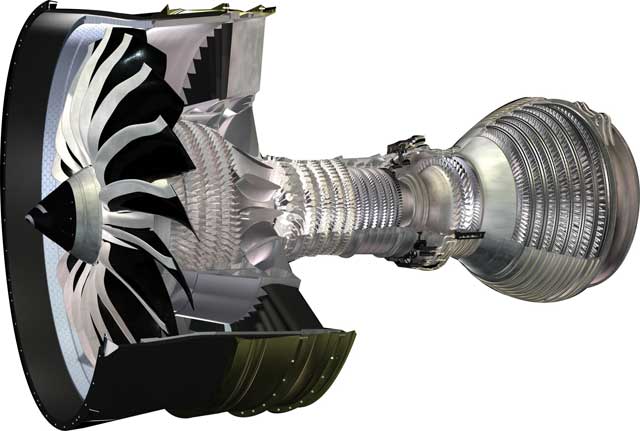CFM International expects to be ready to complete the production transition from CFM56 to the next-generation Leap engine around the end of this decade, but plans to continue building the legacy powerplant for many years to come.
"The year when we will be 100% ready is 2020," says CFM executive vice-president Cedric Goubet. "We will begin the transition [to the Leap] in 2016."
However, the General Electric-Snecma joint venture says it expects to satisfy yearly demand for 100-200 CFM56s for "a long time beyond the change-over". Most of these engines will be needed as spares for Airbus A320s and Boeing 737s.
"We will keep all of our CFM56 capability," says CFM chief Jean-Paul Ebanga. "We are not turning off CFM56 parts capability in 2019."
As of 30 September CFM had a firm backlog of 9,490 engines, equivalent to around six years of production. It expects to produce 1,442 CFM56s this year but CFM's output is forecast to rise 17% to 1,700 powerplants by 2020 after the Leap comes on-stream from 2016.
 |
|---|
| Leap engine cutaway |
Francois Harant, Snecma supply chain director, says the 2020 forecast is based on the A320 and 737 production lines both running at 42 aircraft per month, and adding in Comac output of 10-20 C919s per year. CFM is the sole-source engine supplier for the 737 and C919, but competes with Pratt & Whitney's PW1100G for A320 business.
The CFM joint venture partners' production infrastructure has the capability to "surge" to 2,000 engines annually if market demand exceeds expectations, says Harant: "We will use this surge capacity to ease the Leap transition."
CFM is extending to the Leap its policy of multi-sourcing all engine parts, says Harant. At least one supplier will have been selected for each Leap part by the end of the first quarter of 2013.
"We are already in the process - some selections have already been done," says Harant. "We have a plan to introduce a second source [for each part]. About 90% will be the same [CFM56] suppliers as today. We did have to find some new suppliers for new technology materials and coatings."
Snecma parent Safran is investing in two dedicated plants - each employing 400 staff - to produce up to 32,000 composite Leap fan blades annually. The first, in Rochester, USA, will come on line in 2014, and the second, in Commercy, France, the following year. Each Leap engine will be equipped with 18 of the blades.
Safran and GE are together making capital investments of $750 million in capabilities and facilities required for the Leap production ramp-up. "The transition from CFM56 to Leap is something that we have never faced before," says Harant.
Source: Air Transport Intelligence news
















